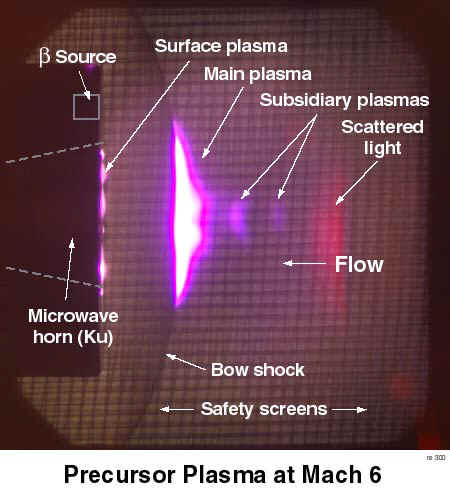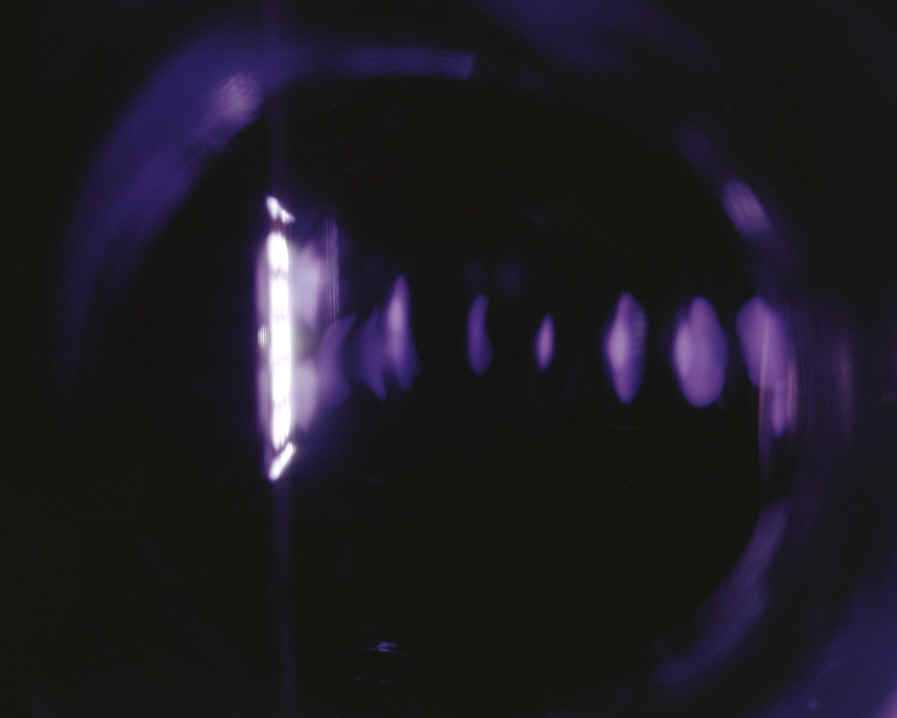|
Plasma
Cold plasmas (weakly ionized gases) are being explored for supersonic/hypersonic flow control and combustion enhancement. Microwave techniques are specifically used to project high power at a distance and thus generate off-body plasmas. In this manner, a "precursor" plasma has been successfully projected onto the bow shock of an aerodynamic model at Mach 6.† Plasmas, in general, are being explored for their effects on the following:
- shock strength and shape
- combustion efficiency
- drag reduction
- sonic boom attenuation
- fuel reforming
Specialized non-intrusive diagnostics are also being developed for measuring gas temperature and density and electron density and temperature in the plasma.
Langley Applications:
In collaboration with the Physics Department of Old Dominion University, we are pursuing Stark broadening of Hydrogen-atom spectral lines.
Plasma Aerodynamics and Combustion
Weakly Ionized Gas (WIG) plasmas have been touted as beneficial in attenuating sonic booms, reducing vehicle drag, and enhancing supersonic combustion. At LaRC, microwave generated WIG plasmas are being explored for their capability to modify aerodynamic shocks, provide flow control, and enhance combustion.
Combustion applications are being pursued at LaRC using a standing-wave configuration of microwaves.
Other NASA researchers involved are: Dr. Jeff Balla, Dr. Greg Herring

Figure 1.
The picture above shows a time-averaged schlieren photograph of a precursor plasma situated on a bow shock of a model at Mach 6. The plasma was generated using high power, pulsed, microwaves from an on-board horn. The results are described in Phys. Plasmas, 8, 5013 (2001). These aerodynamic studies are on going with an emphasis on flow control. The figure below shows a series of equidistantly spaced plasmoids generated using a cavity formed by the horn and a concave reflector. These plasmoids are being studied for their possible use as freestanding, drag-free, ìspark plugsî in a scramjet engine. This volumetric plasma is described in AIAA-2003-4181.

Figure 2.
Primary Advantages of Plasma Aerodynamics :
Enhanced flow control at supersonic/hypersonic speeds and efficient and clean combustion.
|




